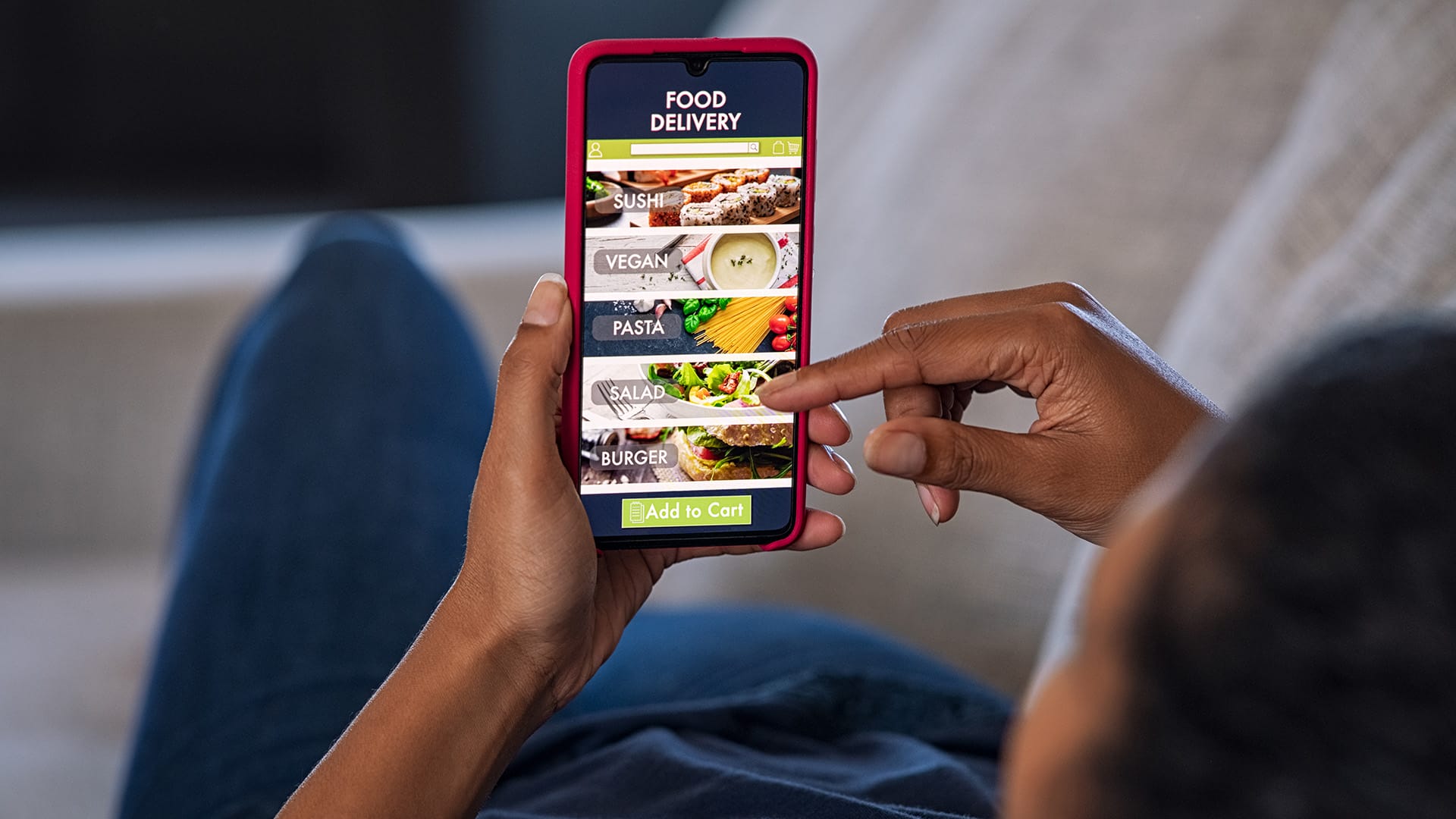The online food ordering and delivery industry is rapidly growing across the world. According to reports, the number of people who have access to a smartphone in the coming years will increase exponentially, with some analysts forecasting that by 2021, over 50% of the world population will have access to a smartphone. Online ordering and food delivery apps have made eating out more convenient than ever. These applications also make it easier for restaurants with numerous locations and menus to reach more customers. The majority of restaurants are only online when they want to provide their menu selection or deliver takeout orders. Online ordering has become a necessity over time because most people prefer to order their favourite dishes on demand and don’t want to go out to eat at a restaurant. Moreover, it has become cost-effective for restaurants as well as consumers.
What does an online food ordering app do?
A food ordering app connects restaurant owners with customers and helps them manage their orders and track sales. The app allows customers to order food online and then pick up their order at a nearby location. The app generally provides a menu with the prices and also offers delivery options. These apps are used by millions of people every day, especially in countries where a large segment of the population is mobile-first. It is also gaining popularity in countries like the U.S. and the U.K. The ordering process usually starts with finding the nearest restaurant and then browsing through the menu. Customers can select their dishes and pay online or cash. They can also ask for recommendations based on their interests and location.
Benefits of using an online food ordering app
An online food ordering app can significantly simplify the entire ordering process for restaurants. By integrating their apps with an online food ordering platform, restaurants can expand their reach and increase their revenue by partnering with other local eateries to create a large menu of options. The app can also work as a marketing tool for restaurants. For instance, restaurants can promote their special offers and events by using the app to send push notifications or push in-app messages. There are also various loyalty programs that let users earn points for every order placed with the app. This can be used to redeem free meals or other discounts.
Online ordering market size and growth prospects
According to industry analysts, the online food ordering market is expected to grow at a healthy CAGR of over 16% from 2019 to 2024. As the number of people with smartphones increases, the demand for online food-ordering apps is also increasing. In addition, technological advancements in the sector are expected to boost growth for the next few years. Several factors are driving the increase in demand for online food-ordering apps. These include rising incomes of consumers, changing demographics, and increasing adoption of online shopping. Rising incomes of the middle class in emerging economies such as India, China, and others are expected to influence the demand for online food ordering apps. Changing demographics, such as the growing senior citizen population and the increasing number of single people, are expected to be other major factors driving the market growth.
Leading online food ordering and delivery apps in Sudan
Many companies are trying to keep pace with the rapid development and market demands in Sudan, which is witnessing a huge transformation. online food delivery is becoming more popular in Sudan and there are several online food delivery apps operating in Sudan at the moment. One of the first companies in the field is Gezira Group, which operates the Yalla Natlob app, one of the country’s top delivery apps. The Gezira Group established Yalla Express as a subsidiary in order to diversify its services and meet the demands of the Sudanese market. Subsequently, Yalla Natlob was developed as an online food delivery service.
Several restaurants partner with the application in order to provide their menus and price information to customers. The app then delivers the food to the customer and receives payment by either cash or via the app’s wallet. The app allows restaurants to distribute and advertise deals and promotions in the app through in-app notifications, SMS, and social media posts.
Key challenges for the food delivery industry
The food delivery industry is currently facing several key challenges. The high operational costs, stringent government regulations, and complex food logistics systems are some of the major challenges faced by the food delivery industry. Operators are also required to invest heavily in marketing and operational costs, which has resulted in a decline in their profit margins. Further, the sector is also facing increasing competitive threats from the online food delivery market. Competition is expected to intensify in the near future, especially after the entry of larger technological players into the market.
Key trends driving growth for the online food ordering sector
Technological advancements in the food sector are expected to drive the demand for online food ordering apps. This includes advancements in artificial intelligence and big data technologies, which are expected to improve the accuracy of recommendations. Moreover, improvements in the internet connectivity and 5G network could also lead to more people adopting online food ordering. Additionally, rising consumer interest in healthy diets, such as vegetarian and vegan diets, is expected to provide a growth opportunity for the food delivery industry.
Online ordering market trends
The online food ordering market is witnessing significant growth among consumers. The rapid adoption of online food ordering apps is expected to increase demand for these apps, especially among the growing middle class in emerging economies. Furthermore, the increasing popularity of healthy diets is expected to encourage people to order healthy food. This is expected to lead to strong demand for online food-ordering apps. Online food ordering industry is rapidly growing across the world because most people prefer to order their favourite dishes on demand.



